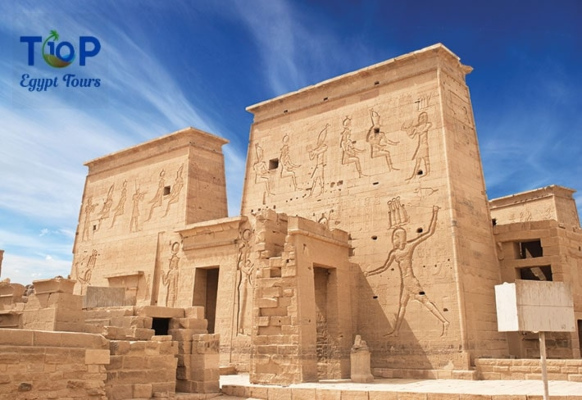The Festival of Isis at Philae, Welcome to Top Ten Egypt Tours, where we embark on a journey through the fascinating tapestry of Ancient Egyptian Festivals and Rituals. In this installment, we delve into the captivating world of the Festival of Isis at Philae, exploring the significance, rituals, and offerings dedicated to the revered goddess Isis.
The Significance of Isis in Ancient Egypt
Isis, one of the most venerated goddesses in the Ancient Egyptian pantheon, was considered the epitome of motherhood, magic, and fertility. Her influence extended beyond Egypt, captivating hearts across borders. The Festival of Isis at Philae was a celebration that drew devotees from far and wide to honor this divine figure.
Location: Philae – The Sacred Island
Situated on the Nile River, the island of Philae served as the epicenter for the worship of Isis. The grand temples dedicated to her, with the Temple of Isis being the most prominent, were the focal points of the festivities. Pilgrims flocked to Philae to partake in the religious ceremonies and witness the grandeur of the celebrations.
The Festival Duration and Rituals Of The Festival of Isis at Philae
1. Duration of the Festival:
The Festival of Isis was an annual event, lasting for several days. Pilgrims, priests, and performers gathered to honor the goddess and participate in a series of rituals.
2. Opening Procession:
The festival typically commenced with a majestic procession, featuring priests carrying sacred artifacts and images of the goddess. The air was filled with the sounds of music, hymns, and the excited chatter of devotees.
3. Ritualistic Offerings:
Central to the festival were the offerings made to Isis. Devotees presented a variety of gifts, including flowers, food, and symbolic items representing aspects of their lives. The offerings were carefully chosen to express gratitude, seek blessings, and invoke the protective powers of the goddess.
Symbolism in Offerings
1. Lotus Flowers:
The lotus flower, a symbol of creation and rebirth, was a common offering. Devotees believed that presenting lotus flowers to Isis would bring about renewal and prosperity.
2. Food Offerings:
Fruits, bread, and other food items were offered to symbolize sustenance and abundance. The act of providing sustenance to the goddess mirrored the belief in her nurturing and protective qualities.
3. Statuettes and Amulets:
Small statues and amulets were often offered as tokens of devotion. These objects were believed to carry the blessings of Isis, providing protection and good fortune to those who possessed them.
The Festival of Isis at Philae was not merely a religious gathering; it was a vibrant tapestry woven with threads of devotion, tradition, and cultural significance. As we explore the ancient rituals and offerings dedicated to Isis, we catch a glimpse of the profound spiritual connection that the people of Ancient Egypt shared with their goddess, making the Festival of Isis a truly enchanting and timeless celebration. Stay tuned for more insights into the rich tapestry of Ancient Egyptian Festivals and Rituals with Top Ten Egypt Tours!



Comment (0)